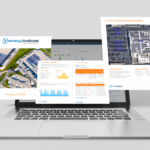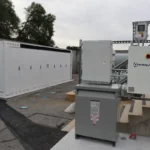IMPORTANT MONTHLY UPDATES & ANNOUNCEMENTS
Welcome to our last newsletter of the year! In this newsletter, we’ll look at a new pilot program with changing TOU periods for Hawaiian Electric utilities, cover how to edit the export energy rate from the Proposal page, look at anticipated rate increases for the new year, and share our 2023 numbers.
Hawaiian Electrics New Pilot Program and Changing TOU Periods
Hawaiian Electric, which includes HECO, HELCO, and MECO, announced that it would introduce a newShift and Save pilot program to some 16,000 residents in February, including different TOU periods and energy rates. The new TOU periods are as follows:
Daytime (9 a.m. to 5 p.m.)
Evening Peak (5 p.m. to 9 p.m.)
Overnight (9 p.m. to 9 a.m.)
The program aims to encourage customers to shift their energy consumption away from the Evening and Overnight periods to the Daytime hours. Current customers on rate schedules “R,” “G,” and “J,” which do not have TOU periods, will be enrolled into the respective Shift and Save versions of these rates with TOU periods. For December, HECO customers on Schedule R pay $0.386 for the first 350 kWh consumed, and that price increases with greater consumption. On the Shift and Save rate schedule, they will pay $0.207 during Daytime hours, $0.414 during Overnight, and $0.621 during Evening Peak. Based on this, shifting one’s energy consumption to the Daytime hours can potentially save $0.18 per kWh.
Hawaiian Electric will implement a bill protection credit to safeguard against unexpectedly high bills from the new program. Residential customer bills will not increase by $10 more than what they would pay on their old schedule for the measured month. Commercial customers will be capped at no more than 4%. The PUC will use the results from the program to determine how and whether to introduce it to all customers in the future. Because this is a pilot program available only to a select few customers, our globally available rates will continue to use the current TOU periods; however, ETB users who wish to model a rate schedule with the new TOU periods can do so by following a few simple steps from our ETBHelp Center.
Video: How to Edit the Export Rate in a Proposal
An issue that ETB users sometimes encounter is finding the Metering details and export rates locked when working in a Proposal. This brief video explains why this occurs and how to make the edits that you need:
Upcoming New Year Updates
Our team is regularly reviewing published Advice Letters (AL) for the California IOUs and PUC filings for other major utilities, and we’ve put together a tentative summary of expected changes beginning in the new year.
-
Southern California Edison: According toAL-5149-E, the total system average for bundled rates will decrease by 0.8%, with Residential and Large Power customers seeing a 2.8% and 3.1% reduction, respectively.
-
San Diego Gas & Electric: According toAL-4319-E, the total bundled system average for electric rates will decrease by $0.067 per kWh or 17.1%.
-
Pacific Gas & Electric: According toAL-7066-E, rates are expected to increase by 19%
-
Central Hudson Gas & Electric: The proposed rate case23-E-0418 will result in approximately 16.4% increases to total bills.
-
Wisconsin Power & Light (Alliant Energy): The Public Service Commission approved a two-step rate increase for 2024 and 2025. Customers will see approximately a 4% increase for 2024, with a total bill increase of 8.4% in 2025.
We will update our rates once the new tariffs are implemented, enabling our team to summarize the expected bill impacts more effectively.
2023 in Review
It’s time for our annual wrap-up, where we share our end-of-year numbers and accomplishments. To kick things off, we’re excited to finish the year with two new utility rate team members: Sarah Rosario and Shaunakay Tomlinson! They’ll be responsible for updating our ever-expanding database of utilities and rates, and we look forward to tackling the new year with them on board.
We added several quality-of-life improvements and features to our rates this year. One of these features involves accounting for Peak Load Contribution (PLC) demand charges separately from standard demand charges. The PLC demand is measured independently from a customer’s measured demand, and ETB rates with PLC demand charges now utilize the “Flat Rate: Charges Vary with Units” charge type to accommodate these charges. This charge type enables our users to input the PLC demand into the Energy Use Profile to isolate it from the demand totals and exclude any demand reduction. Should you consider reducing the PLC demand, adding the same rate with a recalculated Peak Load kW as a rate switch option is recommended.
Another feature we added involved California NEM 3.0 hourly export rates. Previously, we applied a flat average for ACC exports during TOU periods. Now, our NEM 3.0 rates include 8,760 values of ACC hourly exports, ensuring that every ACC export value is accounted for.
And lastly, we reached several milestones in terms of numbers this year. We now have 1,965 total utilities in the platform (just shy of 2,000!): 1,698 U.S. utilities and 267 international utilities. We added 1,300 global rates to our database, which is just over 100 rates per month, bringing our total number of global rates to over 92,000! Finally, we updated 5,200 existing global rates this year (433 rates per month).
We want to thank you for using ETB, and we look forward to working with you all on even more projects in 2024!



